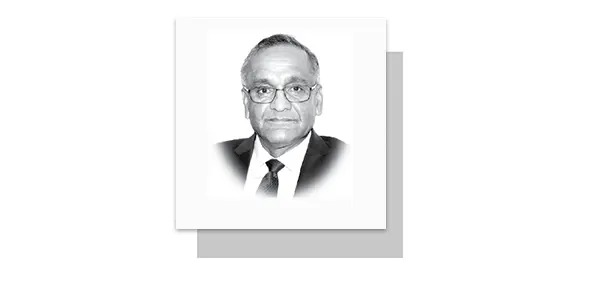LOVE stories of Punjab and their narration by our Sufi poets lend a unique fragrance and intellectual depth to Punjabi literature and poetry. Tale of Heer Ranjha is largely believed to be a sixteenth century story. The tale had been written by several poets and writers before Syed Waris Shah wrote his famous “Heer Waris Shah”. Waris Shah‘s narration of this love story won an unparalleled acclaim. Besides being a rich reservoir of spiritual thought, it is also a masterpiece of literature which skilfully reflects the cultural norms and social attitudes of those times: No wonder Waris Shah is known as the Shakespeare of Punjab.
Though the tale itself is attributed to much older times, one would assume that the story as narrated by Waris Shah (Heer Waris Shah) would be a reflection of the culture of Waris Shah’s times. Heer Waris Shah was written in 1766, a time when Punjab was still under Mughal rule though the empire was declining fast, losing ground to East India Company and the regional powers which in case of Punjab were the Sikhs. Waris Shah’s contemporary thinkers included Bulleh Shah, Shah Abdul Latif Bhattai and Shah Wali Ullah Dehlavi.
Heer Waris Shah weaves several parallel layers of meanings in his narration. Its most superficial interpretation is that of a plain love story; then there is a mystic interpretation in which Waris Shah has used Ranjha’s love for Heer as a veiled allegory for love of God; and then there is yet another layer of meanings in which Waris Shah skilfully paints a picture of the social attitudes of his eighteenth century times; a cultural reflection that eloquently documents the social attitudes and ills of his times. Folk music and poetry are a great reflection of the norms of any society; things that are often left unsaid in a historical discourse are encrypted in their lyrics
Ranjha was youngest among his brothers who lived in Takht Hazara on the bank of river Chenab. He falls in love with Heer, daughter of rich Sials in Jhang and after a scuffle with his brothers over land share, he leaves Takht Hazara. To stay close to Heer, Ranjha starts working under the pretence of a herdsman who takes care of buffalos of Heer’s father. Here he finds an opportunity to meet Heer. Waris Shah uses these buffalos as an allegory for familial wealth.
The legendry villain “Kaido” spies on Heer and Ranjha and tells Heer’s father about their affair. Heer’s father throws Ranjha out of his job. Ranjha’s expulsion from the herdsman’s job impacts the buffalo care and hence the buffalo business. And once that happens, he reemploys Ranjha to take care of the buffalos.Here the story depicts a very delicate point in social architecture; Heer’s father’s appetite for buffalo business overrules Kaido’s reports and accusations of Ranjha’s affair with Heer. Recall back in the story it was the land and wealth that made Ranjha’s brothers to fight with each other. It was all about money and status. Kaido, the villain, is the proverbial wall between two lovers. In superficial reading, Kaido appears to be the reason for Heer’s not getting married to Ranjha. And here there is a point to ponder. Would Heer’s father had agreed to marry Heer to Ranjha, had there been no Kaido in the story? The real reason for rejection of Ranjha was the social status; the mismatch between a ‘herdsman” and the rich Sials. Sial’s match were the rich Kheras. It was about wealth and status rather than Ranjha’s affair with Heer that separated the two lovers. Marrying Heer to a herdsman would have threatened continuity of his ancestral wealth. That economic interests ran supreme was Waris Shah’s critique of the society of his times.
Beauty of Heer Waris Shah lies in the fact that it is not written in a utopia or in a vacuum. He has drawn the entire tale against a backdrop of everyday life; a story of the common man’s society that exists as a mix of virtues and vices. In search for means to win Heer, Ranjha goes to ‘Tilla Joggian’, which at that time was a renowned and established centre of Hindu philosophy. It was a place where people would go to get ‘jog’ or blessings from the joggies. Tilla Jogian, close to Jhelum, survived as a Hindu spiritual centre till 1947. Joggies gave Ranjha the ‘jog’ (blessings) but with the advice that he will have to abandon his worldly desires. And to that Ranjha replies that his entire struggle had revolved around a woman and was built around human desires and worldly affairs. That jog was of no use to him if he had to abandon the worldly affairs. That is a sharp comment on the institution of Joggies.
Era of Heer Ranjha has passed. And so have the times of Waris Shah. But they have left many marks on ground which have survived and exist around us. Waris Shah Shrine in Jandialla Sher Khan is 15 minutes off Sheikhupura interchange on Lahore Islamabad motorway. Takht Hazara the village that Ranjha belonged is some 30 minutes off Midh Ranjha interchange. The village still has some remnants of what is known to be Ranjha’s house. Tilla Joggian, now an abandoned hard to access hill is located close to GT road near Jhelum. Heer Ranjha tomb is in Jhang and hometown of Kherras in Rangpur Kherra near Multan. A visit to these places can take us back in time; and help us feel history and the bye gone days of our social evolution.
—The writer is former Special Secretary, Pakistan Foreign Ministry and former Ambassador to Nepal and South Africa.










